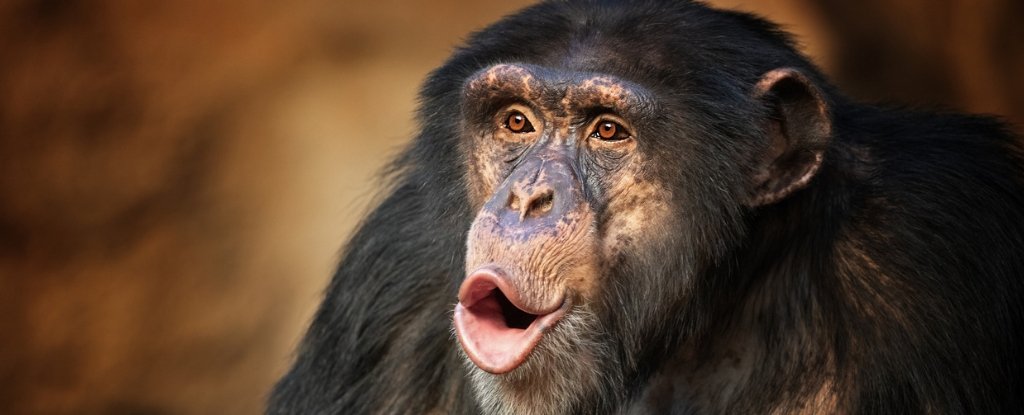
Chimps Smack Their Lips in Rhythms Uncannily Similar to Human Language
by CARLY CASSELLAThe way chimpanzees smack their lips together has a similar rhythm to human speech, and a new study suggests this could be a clue to where our ancestors got their knack for language.
The evolution of human speech is a mystery to us all, and there are few hints of it in non-human primates. In recent years, some scientists have proposed that human speech came about less from primate vocalisations and more from rhythmic facial expressions.
No matter what language we are speaking, humans around the world are known to open their mouths 2-7 times per second while talking (2 to 7 hertz), with each open-close cycle corresponding to a syllable.
But while the universal rhythms of human speech, or the fast cycles of mouth opening and closing, have also been found in the gestures of orangutans and macaques, this is the first time such a rhythm has been identified in African apes - chimpanzees.
Comparing recordings from four chimp populations, both wild and captive, researchers have now found chimpanzees also produce lip-smacks at an average speech-like rhythm of 4 hertz.
What this can actually tell us about our own evolutionary history is limited, but seeing as this is one of the signature features of human speech, it might help us to connect primate vocals and human speech on the evolutionary timeline.
A study published last year, for instance, found that when 2,137 chimpanzee gestures were categorised into groups and their duration was averaged out, they obeyed some of the same basic mathematical principles as human speech.
The authors of this new study, led by researchers from the University of St Andrews in the UK, conclude that their "findings support the hypothesis that speech recruited ancient primate rhythmic signals".
"However, this possibility remains tentative until new, more detailed data become available from both non-hominid and hominid primates," they add.
While the lip-smacking of macaques and gibbons is suspected to be an innate skill, for instance, there's evidence the vocals of orangutans are possibly learned.
And this could very well be the case with chimpanzees, too, who typically produce the sounds when grooming each other, potentially as a way to initiate and prolong the social interaction.
"In our own analyses, there seemed to be variation in the frequency with which individual chimpanzees produced lip-smacks, with some never or only very rarely observed to produce lip-smacks despite similar observation hours as their group members," the authors write.
Comparing video recordings of zoo chimps in Edinburgh, UK and Leipzig, Germany to wild chimps in Uganda, the team found a level of variation in the frequency of their lip-smacking that they say has never been reported before, sometimes up to 2 hertz between populations.
In great apes, however, the fastest mouth rhythms tend to keep a steady rhythm around a single hertz, so the authors think the variability of lip-smacking frequencies in chimp populations may imply social factors instead of hard-wired signals.
Unfortunately, statistical comparison between individual chimpanzees was limited in this research, and few previous studies have disclosed or analysed the levels of variation found between one chimp or another.
Still, between captive and wild populations, the authors found no systematic difference in mouth signals, probably because of a "substantial overlap in the range of rhythms present" among individuals in different groups.
Of course, four populations is not a huge sample size, and further data will need to be gathered between individuals and populations so we can figure out where this uncannily speech-like rhythm is arising from.
Given their findings, the team is calling for future research across primate species, to find out how these human-like rhythms arise in both individuals and populations. Knowing this might just tell us more about the evolution of our own language.
The study was published in Biology Letters.